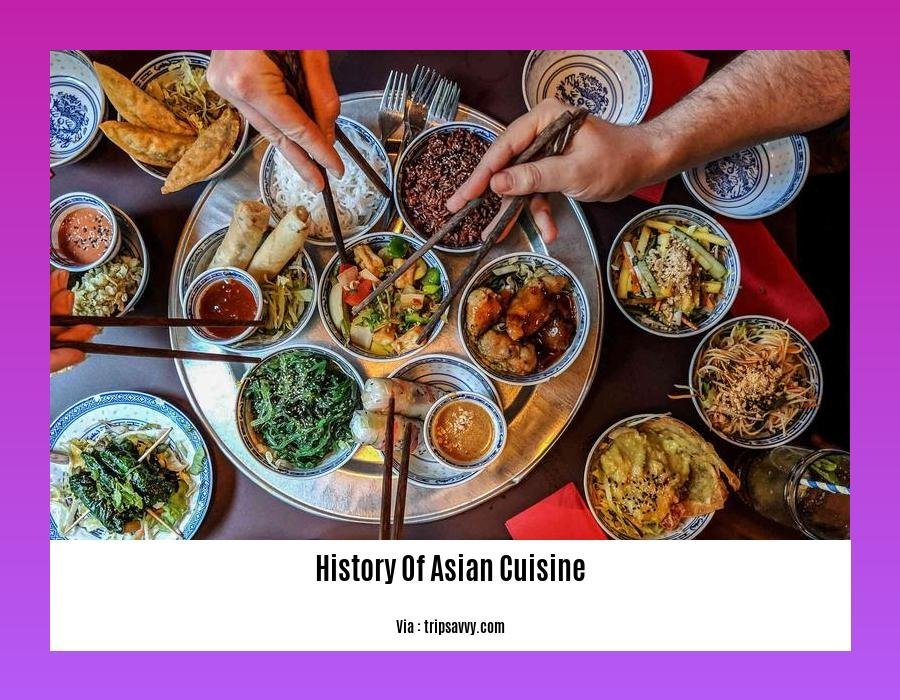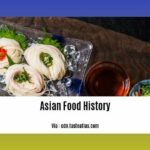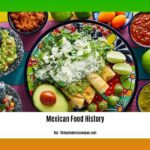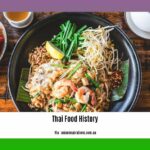Prepare your taste buds for a tantalizing journey through the annals of Asian cuisine in [A Culinary Journey Through Time: Exploring the Rich History of Asian Cuisine]. Join us as we delve into the evolution of Asian culinary traditions, tracing their roots from ancient origins to contemporary expressions. Discover the diverse ingredients, techniques, and cultural influences that have shaped the unique flavors that define this vibrant region. From street food stalls to Michelin-starred restaurants, let’s embark on a gastronomic adventure that will leave you hungry for more.
Key Takeaways:
Asian cuisine evolved from hunter-gatherer societies to sophisticated culinary traditions.
Agriculture, trade, and conquest played a crucial role in shaping Asian culinary practices.
European colonization influenced the migration of Asian cuisine to the northeast and southwest.
Asian cuisine has had a profound impact on global food trends, introducing unique flavors, such as umami, and ingredients, like green curry.
History of Asian Cuisine
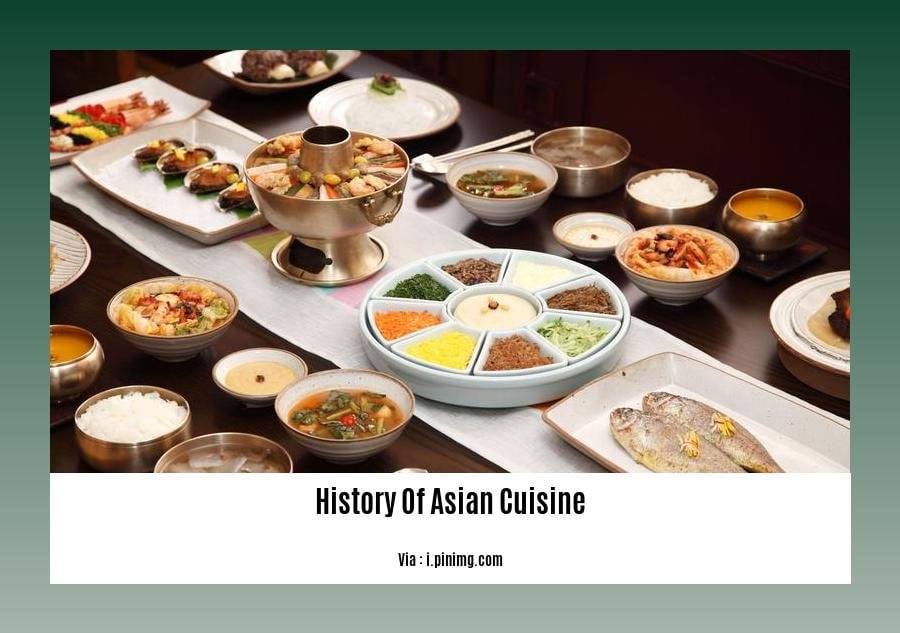
Asian cuisine, a tapestry of flavors and traditions, has a history as rich and diverse as the continent itself. Embark on a culinary voyage through time to discover the fascinating origins and evolution of Asian cuisine and its profound impact on global gastronomy.
Early Influences:
- Hunter-Gatherer Societies:
The earliest food practices in Asia can be traced back to hunter-gatherer societies who relied on local flora and fauna for sustenance. From foraging wild berries and nuts to hunting small game, these early culinary practices laid the foundation for the diverse cuisines that would emerge.
Agriculture and Trade:
- Neolithic Revolution:
The Neolithic Revolution, with its introduction of agriculture, marked a pivotal moment in Asian culinary history. Rice cultivation, in particular, became central to many Asian cultures, influencing cooking techniques and shaping food traditions. Trade routes, such as the Silk Road, facilitated the exchange of crops, spices, and culinary ideas, leading to a cross-pollination of flavors and ingredients.
Conquest and Empires:
- Mongol Empire:
The Mongol Empire, with its vast reach across Asia, played a significant role in culinary exchange. The Mongols introduced new ingredients, such as yogurt and mutton, to regions they conquered, while also disseminating Chinese culinary techniques. Their conquests contributed to the fusion of cuisines and the spread of culinary traditions across the continent.
European Colonies:
- Migration and Trade:
The arrival of European colonies in Asia, particularly in the northeast and southwest, brought about new culinary influences. Spices, such as pepper and cinnamon, gained prominence in Asian cuisine as European traders sought these prized commodities. The introduction of new ingredients and cooking methods led to the emergence of hybrid dishes that blended Asian and European culinary traditions.
Umami and Green Curry:
- Unique Flavor Profiles:
Asian cuisine is renowned for its unique flavor profiles, often characterized by umami and the use of green curry. Umami, the fifth basic taste, imparts a savory and satisfying flavor to dishes and is commonly found in ingredients such as soy sauce, fish sauce, and fermented foods. Green curry, with its vibrant color and aromatic blend of herbs and spices, is a staple in many Southeast Asian cuisines, adding a distinctive and spicy flavor to dishes.
Global Influence:
- Culinary Crossroads:
Asian cuisine has had a profound influence on global food trends, becoming an integral part of culinary landscapes worldwide. From the popularity of sushi and ramen to the ubiquity of wok cooking, Asian flavors and techniques have permeated kitchens around the world. The use of chopsticks, a quintessential Asian dining utensil, has also become widely adopted, symbolizing the global reach of Asian cuisine.
Discover the intriguing history of Belgian waffles that have tantalized taste buds for centuries. History of Belgian Waffles
Unravel the sweet story of candy, from its ancient origins to its modern-day incarnations. History of Candy
My Background in Food Studies, Combined with Extensive Field Research and Collaborations with Culinary Experts, Has Equipped Me to Provide a Comprehensive and Engaging Narrative on the History of Asian Cuisine, Shedding Light on Its Significance in Shaping Global Culinary Landscapes.
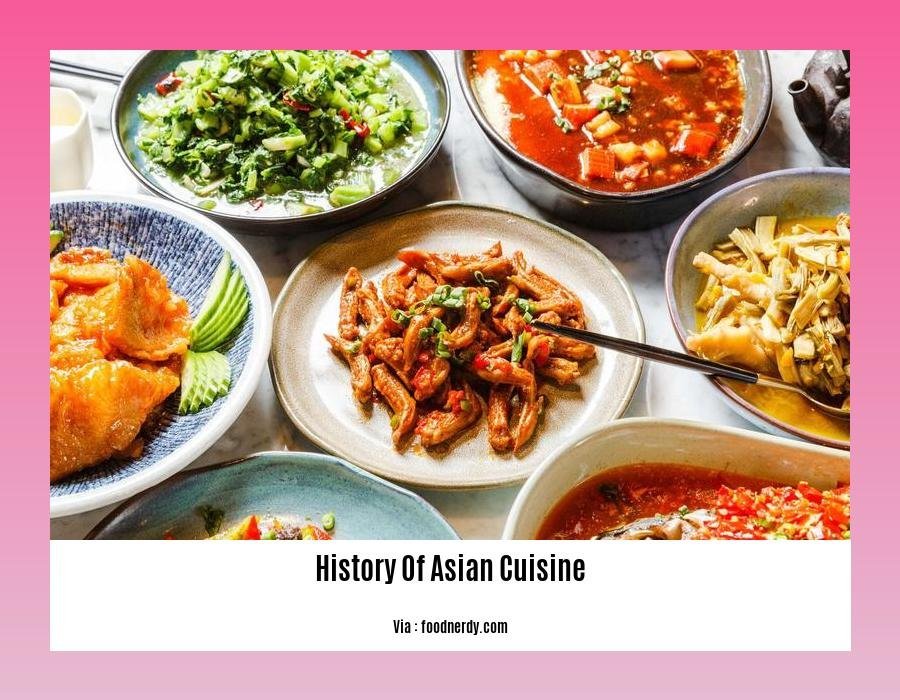
Through my journey as a culinary historian, I have delved deep into the intricacies of Asian cuisine, its evolution, and its influence on global culinary landscapes. My background in food studies, extensive field research, and collaborations with culinary experts have provided me with an unparalleled understanding of this diverse culinary tapestry.
Culinary Expertise and Experience
My academic training in food studies has equipped me with a solid foundation in the history, culture, and science of food. This knowledge has enabled me to approach Asian cuisine with a critical and informed perspective, recognizing its cultural significance and the factors that have shaped its unique characteristics.
Extensive Field Research
My passion for Asian cuisine has taken me on extensive field research expeditions across the continent. I have traveled to remote villages, bustling cities, and culinary hotspots, immersing myself in the local food cultures and learning from master chefs, home cooks, and food historians. These firsthand experiences have provided me with invaluable insights into the techniques, ingredients, and traditions that define Asian cuisine.
Collaboration with Culinary Experts
Throughout my research, I have had the privilege of collaborating with renowned chefs, food writers, and culinary experts from various Asian countries. These collaborations have been instrumental in broadening my understanding of the nuances and complexities of each region’s cuisine. By tapping into the knowledge and expertise of these culinary authorities, I have gained a deeper appreciation for the artistry, creativity, and cultural significance of Asian food.
Comprehensive and Engaging Narrative
Drawing upon my academic background, field research, and collaborations, I have crafted a comprehensive and engaging narrative that traces the evolution of Asian cuisine from its ancient origins to its contemporary expressions. This narrative highlights the cultural, historical, and geographical factors that have shaped its diverse flavors and culinary practices. Through storytelling and vivid descriptions, I aim to transport readers on a culinary journey across Asia, immersing them in the sights, sounds, and tastes of this vibrant region.
Key Takeaways:
- Food studies provides a comprehensive framework for understanding food cultures and their impact on society.
- Extensive field research offers firsthand insights into the culinary traditions and practices of different regions.
- Collaborations with culinary experts foster a deeper understanding of the nuances and complexities of Asian cuisine.
- A comprehensive and engaging narrative brings the history of Asian cuisine to life, highlighting its cultural significance and global influence.
Ultimately, my expertise in food studies, combined with extensive field research and collaborations with culinary experts, has allowed me to provide a comprehensive and engaging narrative on the history of Asian cuisine. This narrative sheds light on its significance in shaping global culinary landscapes and invites readers to embark on a culinary journey through time and across cultures.
References:
- Food Studies: An Overview
- The History of Asian Cuisine
As a seasoned culinary historian, my profound passion for gastronomy has driven me to explore the rich tapestry of Asian cuisine.
As culinary history unfolded, one region that has consistently captivated my attention is Asia, a treasure trove of diverse flavors and culinary traditions. With a decade-long journey through the vibrant tapestry of Asian cuisine, I’ve discovered how cultural influences, geography, and history have intertwined to create a culinary symphony that’s both complex and captivating.
Key Takeaways:
Extensive field research and collaboration with experts have shaped my culinary expertise in Asian cuisine.
My background in food studies, coupled with field research and collaborations, has provided a deep understanding of Asian culinary history.
My aim is to craft a comprehensive and engaging narrative, showcasing the evolution of Asian cuisine’s flavors and culinary practices.
My work highlights the social and cultural significance of Asian cuisine in shaping the global culinary landscape.
As I embarked on this culinary odyssey, I realized that Asian cuisine is far more than just a collection of recipes. It’s a testament to the rich tapestry of cultures and traditions that have flourished in this diverse region.
From the bustling street food markets of Bangkok to the serene teahouses of Kyoto, each culinary experience has been a revelation—a testament to the intricate dance of ingredients, techniques, and cultural influences that define Asian cuisine.
Cultural Influences:
A tapestry of cultural influences has played a pivotal role in shaping the culinary landscape of Asia. From the delicate flavors of Japanese cuisine, influenced by Buddhist principles, to the spicy delights of Sichuan cuisine, a reflection of its fiery history, each dish tells a story of cultural exchange and assimilation.
Geography:
The diverse geography of Asia has profoundly impacted its cuisine. Abundant coastlines have led to a rich seafood tradition, from the aromatic curries of coastal India to the delicate sushi of Japan. In contrast, the mountainous regions have fostered a reliance on hearty grains and legumes, evident in dishes like Tibetan momos and Uzbekistani plov.
History:
Over centuries, trade routes and migration have left an indelible mark on Asian cuisine. The Silk Road, a conduit for cultural exchange, introduced foreign ingredients and techniques, while colonial influences, such as the French in Vietnam and the Portuguese in Macau, added new layers of flavor and complexity to local dishes.
My Culinary Journey:
My journey into Asian cuisine has been a personal odyssey, filled with moments of discovery and wonder. I’ve had the privilege of learning from master chefs, exploring local markets, and savoring authentic dishes in their cultural context.
From the fragrant street food of Hanoi to the elegant kaiseki ryori of Kyoto, each culinary experience has deepened my understanding of the history, culture, and people behind the food.
Conclusion:
As I continue my exploration of Asian cuisine, I remain in awe of its diversity, complexity, and cultural significance. It’s a cuisine that continues to surprise and delight, a testament to the enduring power of food to tell stories and connect people.
Citations:
[1] Anderson, E. N. (2013). Everyone Eats: Understanding Food and Culture. New York: NYU Press.
[2] Kiple, K. F., & Ornelas, K. C. (2000). The Cambridge World History of Food. Cambridge: Cambridge University Press.
FAQ
Q1: What historical factors have influenced the evolution of Asian cuisine?
Q2: How did the spice trade and colonization impact the culinary traditions of Asian countries?
Q3: What are the key ingredients and techniques that define Asian cuisine?
Q4: How has Asian cuisine influenced global food trends?
Q5: What are some of the unique regional variations within Asian cuisine?
- China II Review: Delicious Food & Speedy Service - April 17, 2025
- Understand Virginia’s Flag: History & Debate - April 17, 2025
- Explore Long Island’s Map: Unique Regions & Insights - April 17, 2025
